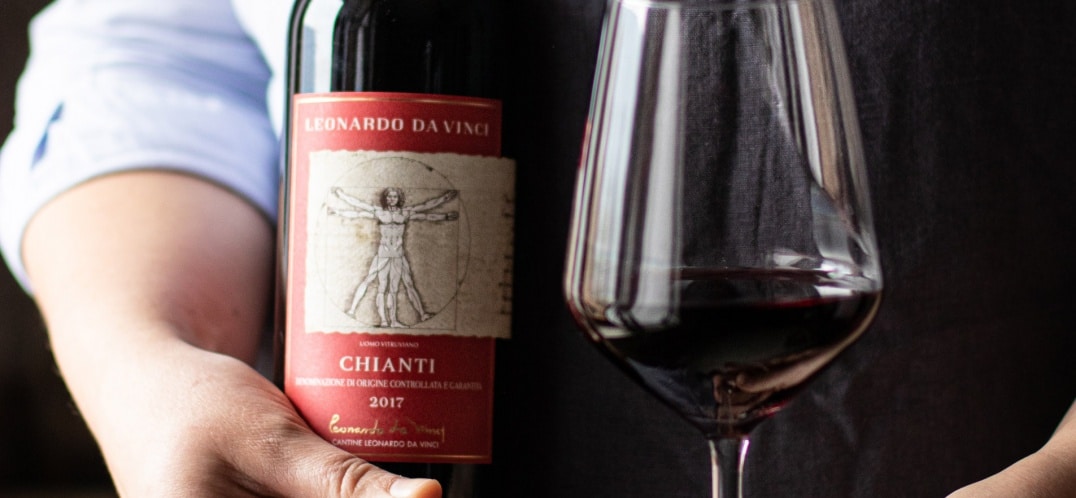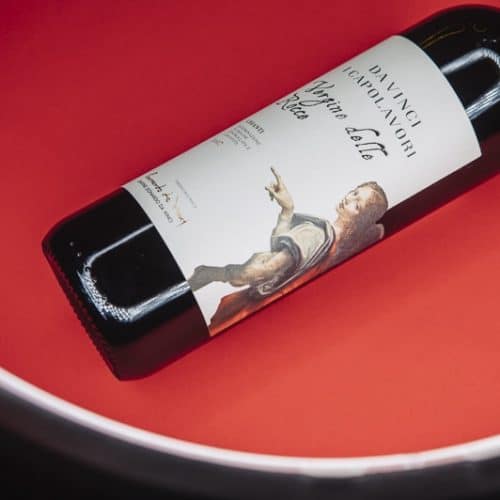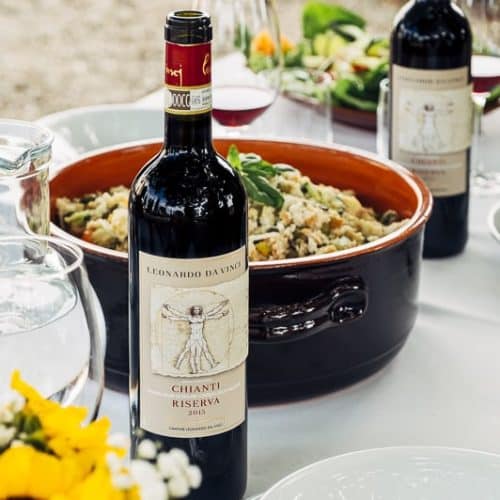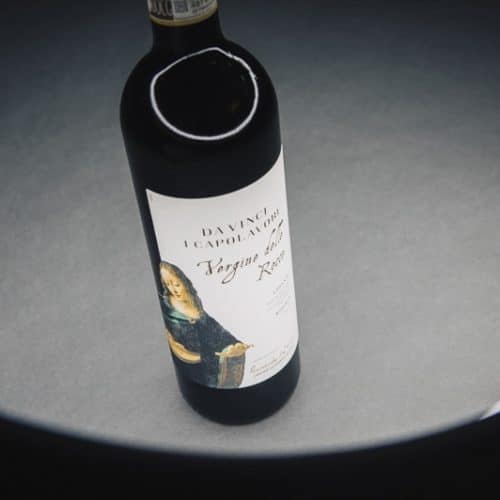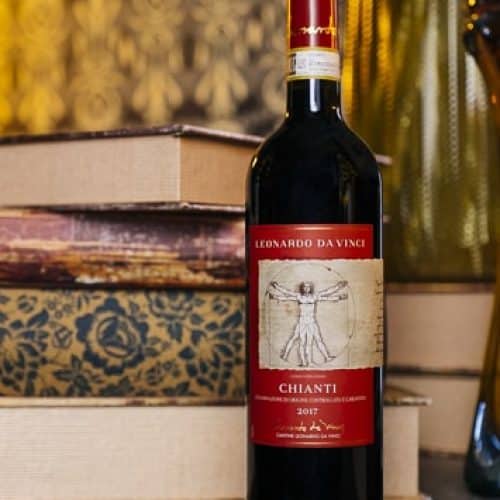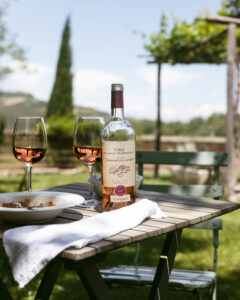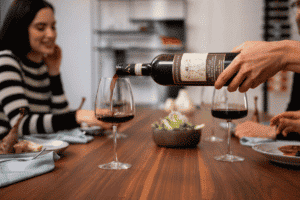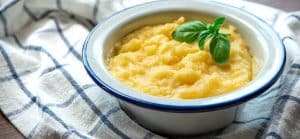Chianti is a red wine produced in Tuscany with the DOCG denomination. The formula of Chianti wine, i.e. the right blend of grapes, the best method for winemaking and aging times, were developed for the first time in 1870 by Baron Bettino Ricasoli who, in addition to being a prominent politician and to have held the role of Prime Minister after Cavour, he was also an expert and appreciated winemaker. According to Ricasoli’s recipe, the vines to be used to obtain the Chianti wine were: Sangiovese, Canaiolo and Trebbiano Toscano. Today the production of Chianti wine is regulated by a production specification which, among other things, also establishes the area of origin of the grapes for the Chianti DOCG which is extended to all central Tuscany, in the provinces of Florence, Pisa, Pistoia, Prato, Siena and Arezzo.
In addition to being one of the most loved wines of Tuscany, Chianti is a wine that is well known and appreciated all over the world, and there are many curiosities and anecdotes that accompany its history: one of these concerns the scientist Enrico Fermi, exiled in the States United, who in 1942 invented the atomic battery. He toasted with his team with a flask of Chianti – still preserved in the FermiLab museum in Batavia, near Chicago.
Chianti: prices and types
Without prejudice to some specificities linked to precise sub-areas of cultivation and origin of the grapes, in general, in order to obtain the Riserva denomination, the Chianti DOCG must age at least two years and have an alcohol content of at least 12% vol. Considering the many variations of this extraordinary product, the price of Chianti wine is also variable and depends on specificities including the area of origin of the grapes, or the aging time.
The Chianti of Cantine Leonardo da Vinci
In their vineyards in Tuscany, Cantine Leonardo da Vinci produces Chianti DOCG and Chianti DOCG Riserva. In the I Capolavori collection, inspired by Leonardo’s most famous works that are paired with the most famous and loved wines of the Italian territory, Chianti is paired with the Virgin of the Rocks, with the painting shown on the label. The Tuscan landscape in Leonardo’s painting fits perfectly with this typically Tuscan wine. The Chianti DOCG Vergine delle Rocce is fragrant and full-bodied on the palate, has a balanced and intense aroma with excellent persistence and a fruity aftertaste.
The Riserva version has a purple red color with intense chromatic nuances, the nose has fruity and spicy hints of cherry, vanilla and cinnamon.Chianti DOCG and Chianti DOCG Riserva are also present in the Leonardo da Vinci collection, which includes Italian wines suitable for everyday dining. The Chianti DOCG by Leonardo da Vinci has a pleasant, intense, long, decidedly fine taste. The Riserva version has fruity and spicy hints of cherry, vanilla and cinnamon.
Chianti and Chianti Classico: what’s the difference?
The difference between Chianti and Chianti Classico is a geographical and also historical issue. Understanding the two identities allows you to orient yourself better in your choice. Chianti and Chianti Classico are two different DOCGs with two distinct disciplines and two different protection consortia. The term Chianti Classico indicates a wine with a very precise DOCG, produced in the original Chianti area, within a production area that includes the municipalities of: Castellina in Chianti, Gaiole in Chianti, Greve in Chianti and Radda in Chianti in full and, in part, those of Barberino Val d’Elsa, Castelnuovo Berardenga, Poggibonsi, San Casciano Val di Pesa and Tavarnelle Val di Pesa. In 1716, the Grand Duke of Tuscany Cosimo III set the boundaries of the Chianti production area, where the homonymous wine, which was already very successful at the time, was produced. At the beginning of the twentieth century, that production area was no longer sufficient to meet the enormous demand, so production began even outside the territory delimited by the Grand Duke. It was therefore necessary to emphasize and protect the boundaries of the original production and in 1932 the “Classico” suffix was added to the wines produced in the area of origin. Today, in the geographical area of Chianti, Chianti Classico is produced, while Chianti wine is produced outside the original geographical area of Chianti.
Gioconda and Chianti Classico
According to the identifications of Giorgio Vasari, Leonardo da Vinci, in one of his most famous paintings, La Gioconda, portrayed a young Florentine noblewoman, Monna Lisa Gherardini. In fact, her husband Francesco del Giocondo commissioned Leonardo to paint the portrait in the early 16th century. The Gherardini family owned Villa Vignamaggio, one of the historical estates of Chianti Classico. For this reason, one might think that the background of the most famous painting in the world portrays the view of the hills on which the villa overlooks, that of the Chianti Classico.
Chianti at the Table
Chianti DOCG is a wine with a lively ruby red color, a fruity aroma and a harmonious, dry flavor, which is refined over time, acquiring more richness and complexity. On the table it is served with cured meats and cheeses, first and second courses based on red meat, traditional Tuscan dishes such as ribollita, or bean and black cabbage soup and, of course, ‘Fiorentina’ T-bone steak
